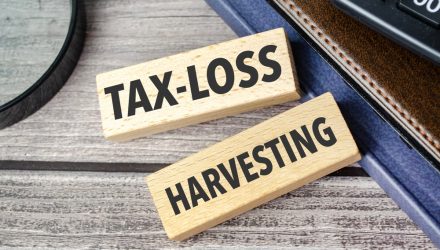With half of 2023 in the books, investors could already start thinking of how to minimize their tax burden when 2024 comes around. One way is via tax-loss harvesting, which is an advantage of direct indexing.
This involves selling off assets at a loss in order to offset profits. The assets sold off at a loss can be replaced with similar or identical assets. For example, an exchange traded fund (ETF) sold at a loss could be supplanted by another ETF.
The challenge with ETF tax-loss harvesting is its holdings, which can be vast depending on the strategy of the ETF. Investors can’t focus on specific holdings in a fund to account for a loss with the same precision involved when harvesting for individual stocks.
This is where direct indexing could be of benefit for harvesting. The strategy involves hand-picking stocks for a portfolio in order to mimic an index. In the case of the S&P 500, a direct indexing strategy would involve choosing holdings that mirror the S&P 500.
Given this ability to tailor a portfolio with individual stocks, investors can harness tax-loss harvesting with more accuracy. In order to do the same thing with an ETF, certain underperforming stocks would have to comprise a sizeable portion of an ETF’s holdings in order to negatively affect its performance.
“Direct indexing portfolios make it simple to handle precise tax-loss harvesting, since it’s easy to sell underperforming individual stocks,” Forbes Advisor explained. “Take the cash from each tax-loss sale and buy shares in similar companies to balance your portfolio’s allocations. Meanwhile, you’ve generated a capital loss that you can use to reduce your overall tax liability.”
An Automated Way to Tax-Loss Harvest
Now comes another challenge: looking for individual stock opportunities in the market to take advantage of tax-loss harvesting. This is where a service platform like Vanguard Personalized Indexing can identify opportunities for tax-loss harvesting in an automated fashion.
The platform uses algorithms that can identify opportunities at various parameters. These customization options afford the investor or advisor a broad array of advantages.
“How frequently the direct indexing technology scans a portfolio for tax-loss harvesting opportunities—quarterly, monthly, or even daily (as with Vanguard Personalized Indexing)—is key to maximizing investors’ tax alpha,” Vanguard noted on its product website. “Direct indexing with daily tax-loss harvesting has boosted certain investors’ after-tax returns by 1%–2% or more.”
For more news, information, and analysis, visit the Direct Indexing Channel.

